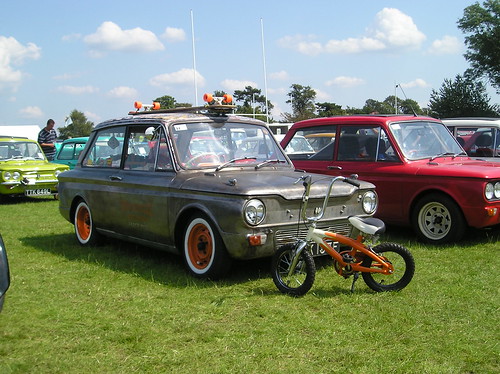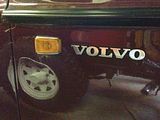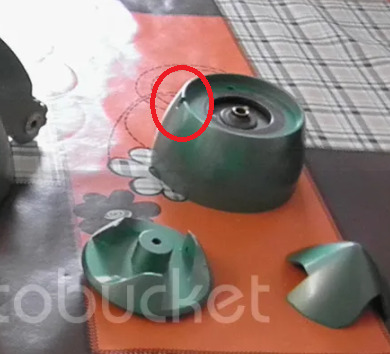1950s GEC Rubber Blade Bullet Fan
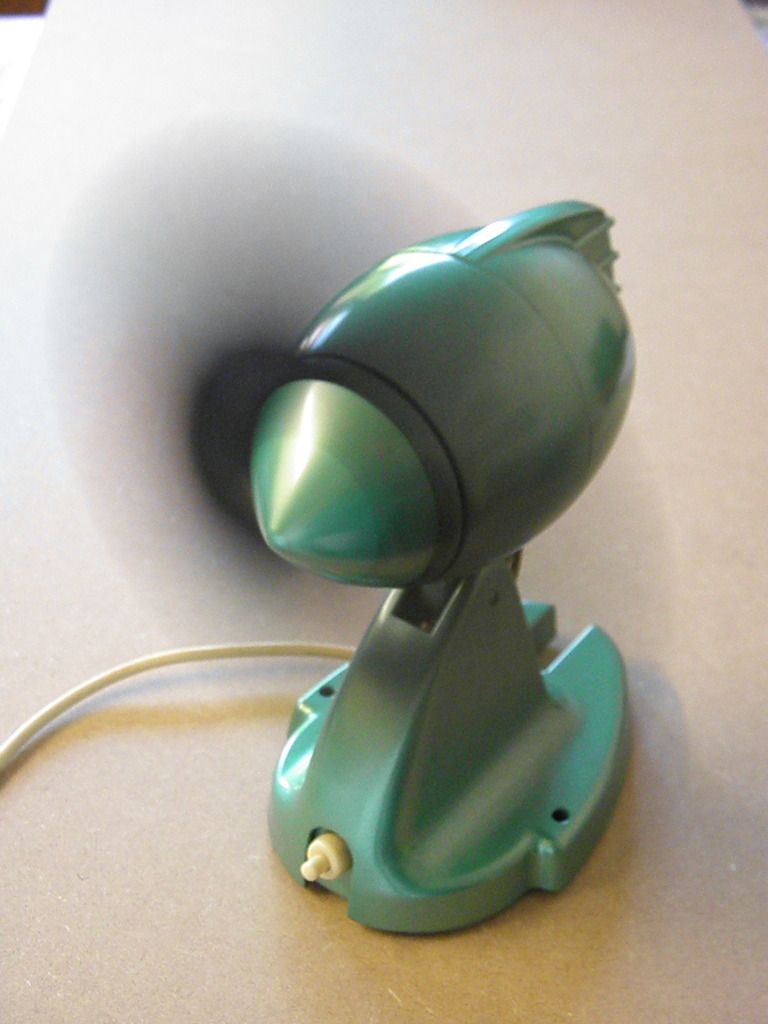
Not a car - but a mechanical object with classic aeronautical styling!
This little fan narrowly missed the bin when an old production manager took a dislike to it and decided to throw it away! Being someone who appreciates the qualities of old junk, the fan quickly found itself out of his hands and inside my bag.
It is a 1950s GEC rubber-blade bullet fan. They quite often appear on ebay and are sometimes mistakenly described as 1930s due to the BS number on the base-plate. According to an internet source - GEC introduced the 'Grey Mist' metallic Turquoise-grey paint in 1949, which these are, and helps confirm that they are not from the 30s.
Quite a few years after it's rescue, I finally got round to restoring the little fan. A previous owner had made modifications to keep the fan going. A latch which controlled the tilt of the fan was missing and was replaced by a 'u' shaped brass bar with bolts fixed through the body. There were also large holes drilled through the motor housing, presumable to aid cooling (the do appear to be quite effective heaters!). The fan looks like it was also re-wired, as this was all in good condition and different from others I have seen pictures of, although obviously still old.
The base-plate was easy enough to remove - having just two screws. The motor body was a bit of a puzzle. There turned out to be an imperial-size grub-screw on the fan assembly accessible through a small notch on the motor casing - the fan being rotated around until the allen-key located in the screw. Once the fan was removed from the body, two nuts held the casing together, and a small screw at the back of the fan held the rubber blades in their casing - a very clever design.
Once apart all the painted parts were stripped, holes were given a bevelled edge and filled with metal-based filler (I'd have loved to have soldered the holes, but thought it too risky). I manufactured a new latch from brass using a pillar drill as I have no lathe, and a spring from a pen! The body was then primed, sanded, primed and sanded again, then a top-coat of Ford Jade Green paint (I wanted it to be more colourful than the original grey - and thought the green suited the fan well).
The mechanical parts were then cleaned and oiled, and the whole thing reassembled very carefully on a cloth so as not to damage the new paint!
Although the fan does work - I do not intend to use it as such - it is very old and has done it's share of work. Some people do tend to worry about the lack of guard around the blades - well; they are made of rubber, and there is very little torque from the motor. I would not say that it is pleasant to get your fingers caught in the blades - but it does not really hurt - I think the biggest danger would be having your arm knocked whilst holding hot tea!
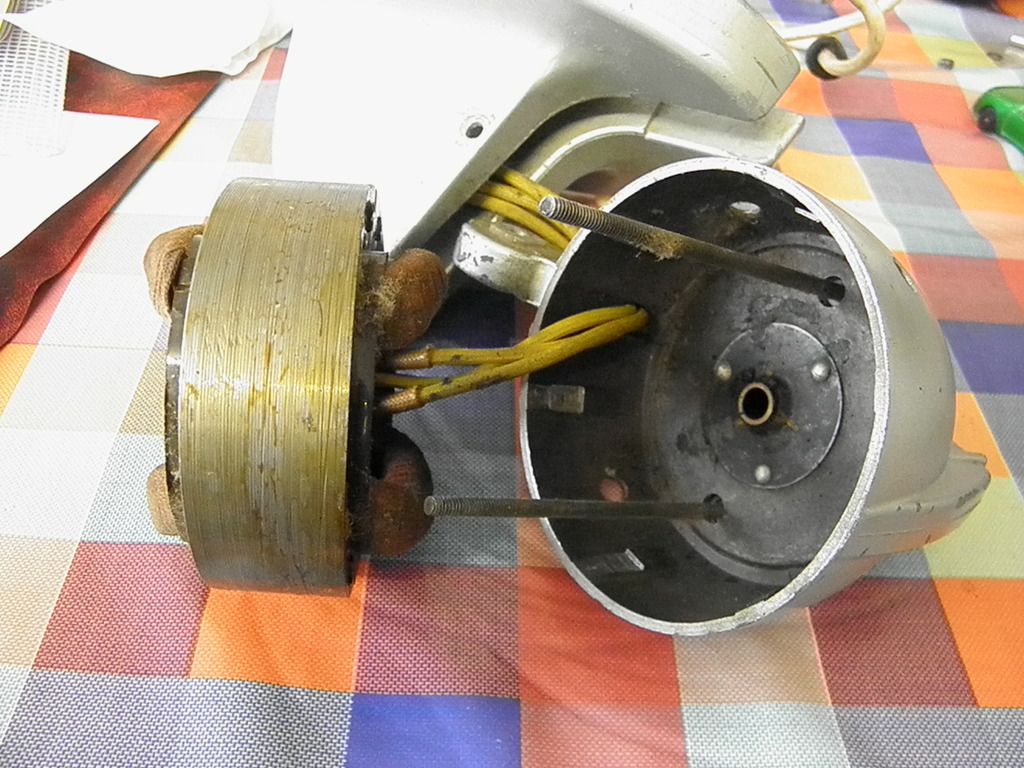
Strip-down – Rear motor body
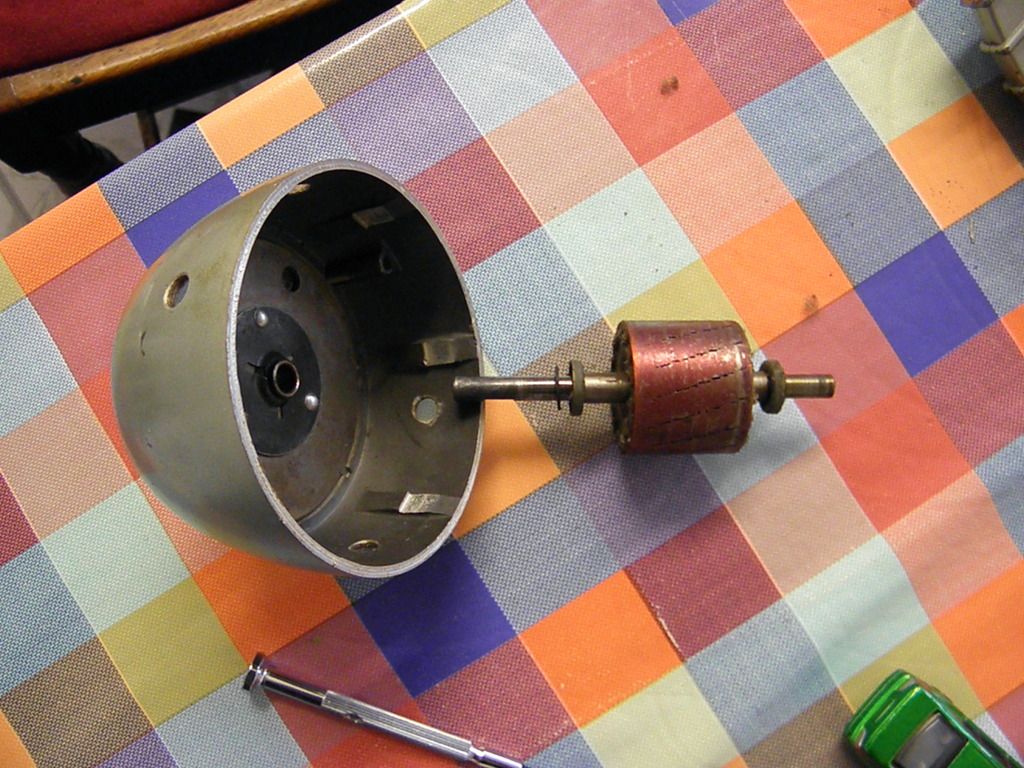
Strip-down – Front motor body
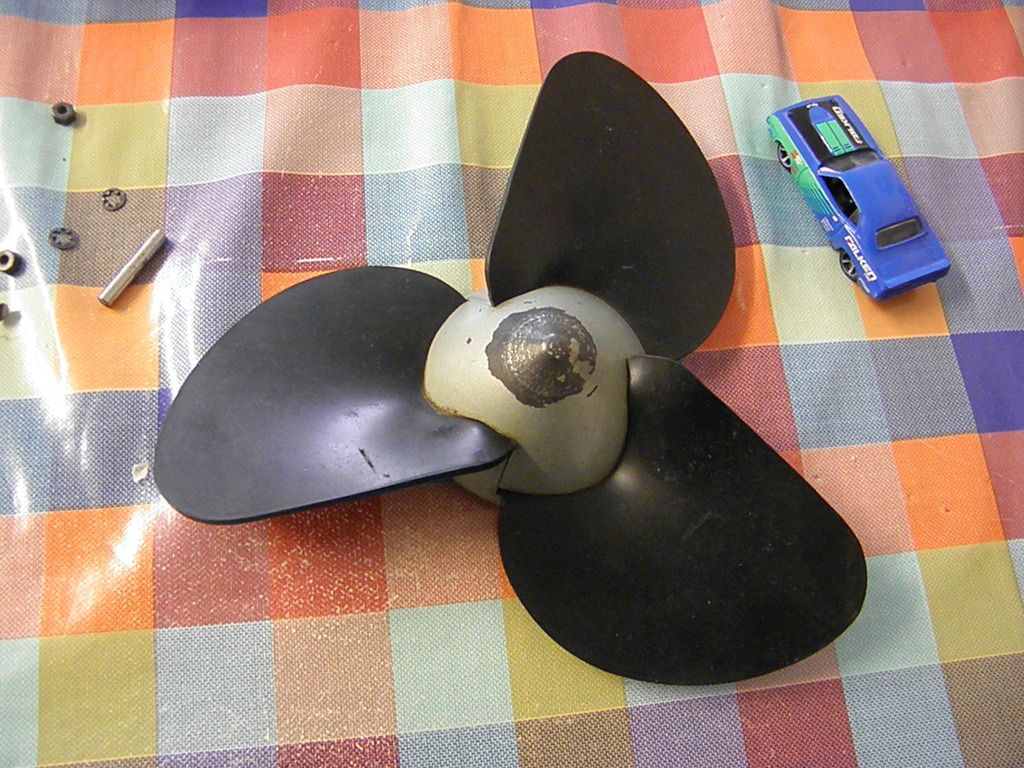
Strip-down – Fan Removed

Strip-down – Fan disassembled. Note the single screw for holding the assembly together.
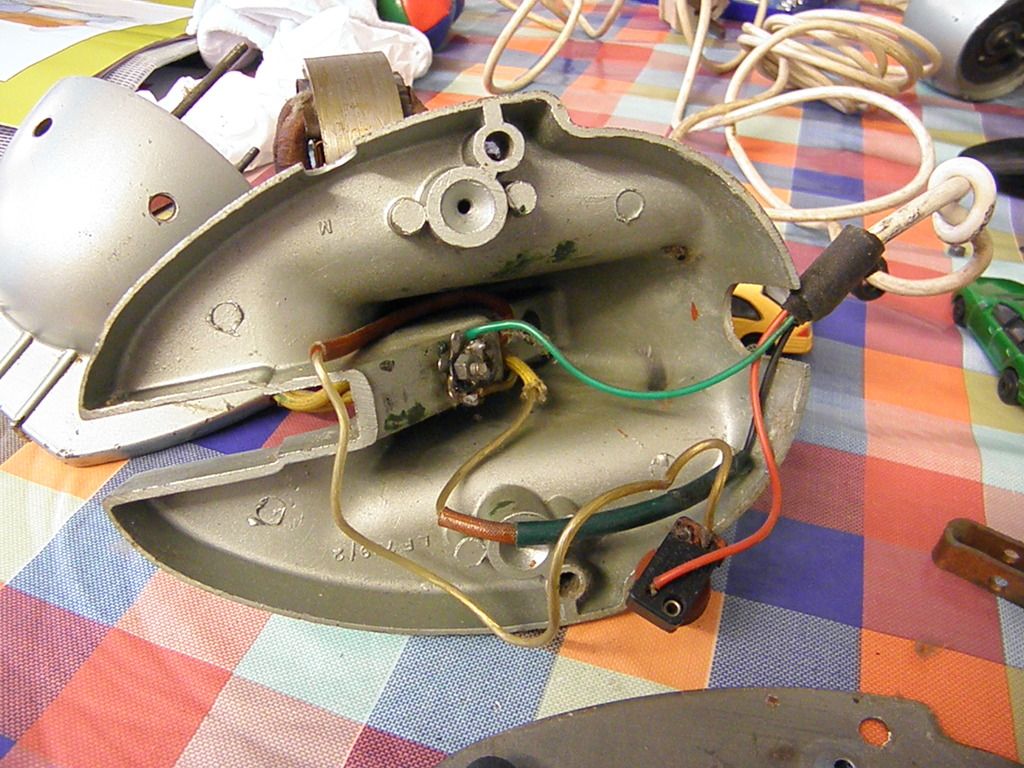
Strip-down – Inside the base. Note the holes on the motor casing behind the base – these should not be there!
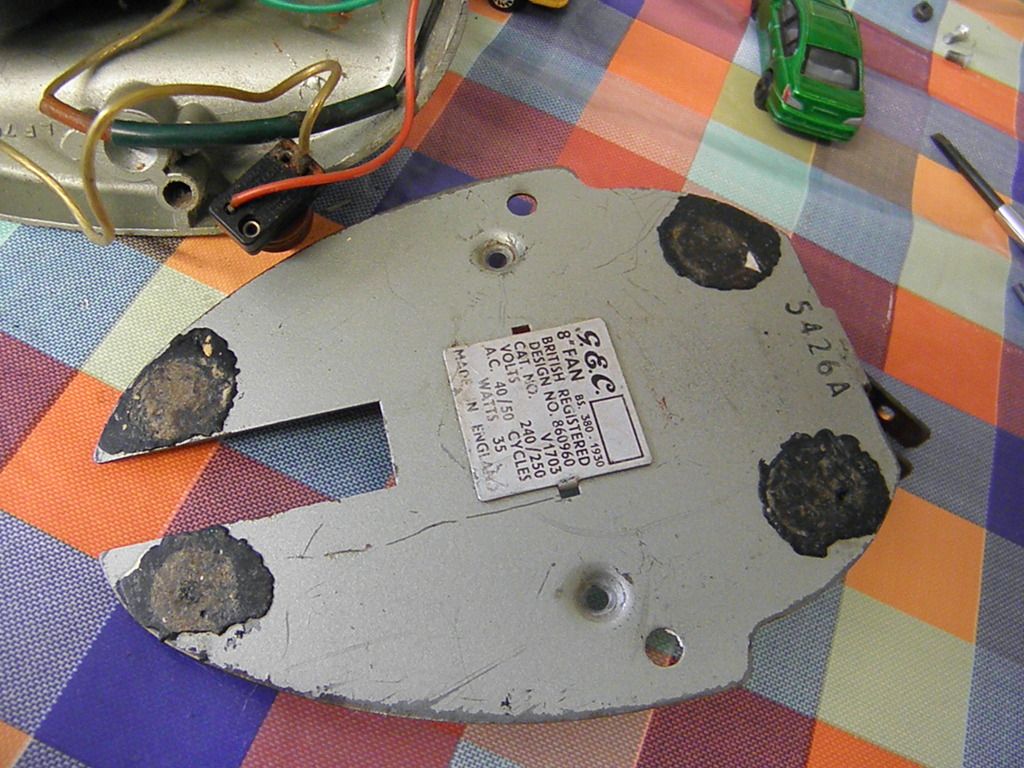
Strip-down – The baseplate
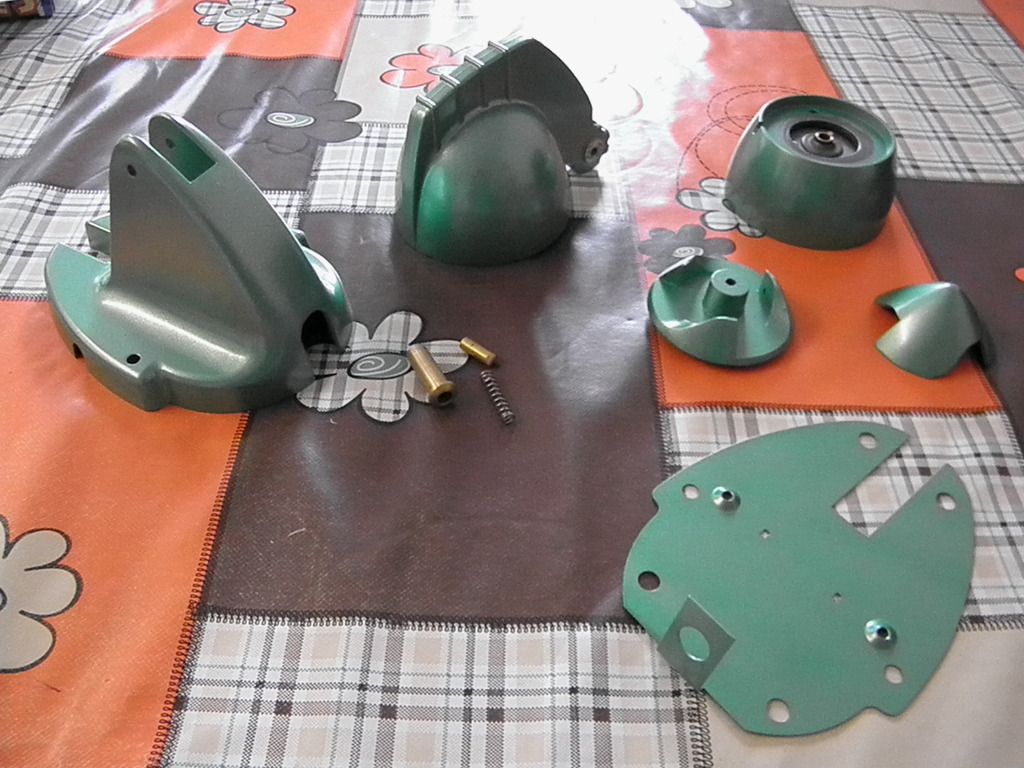
Freshly painted parts
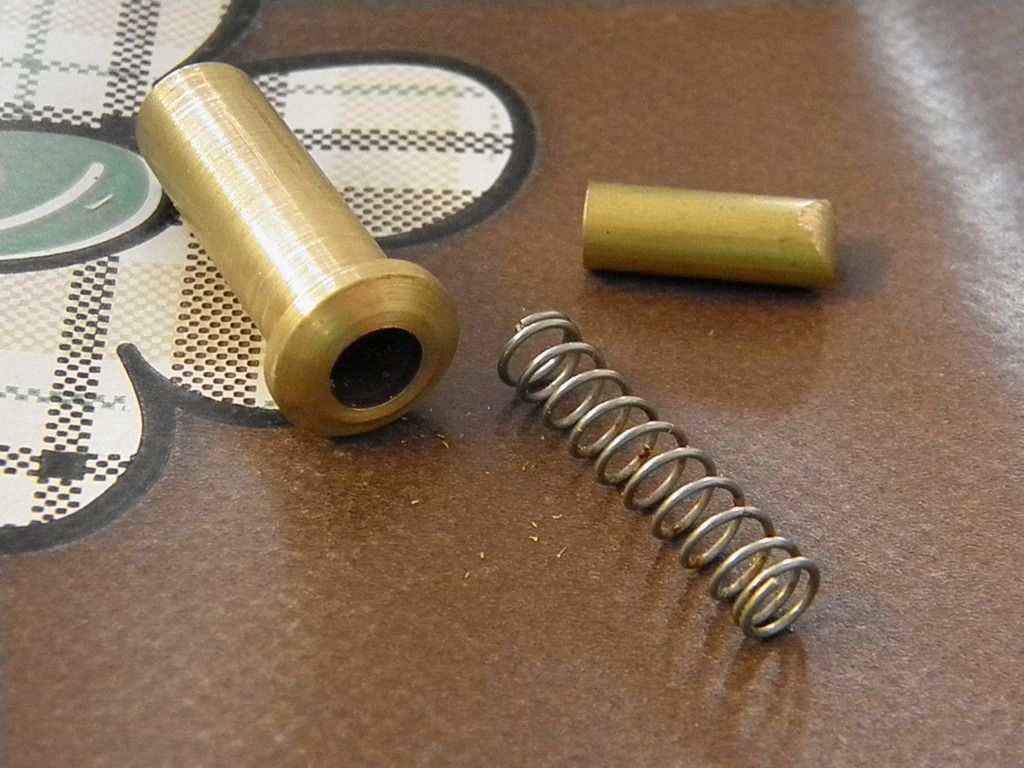
New handmade latch
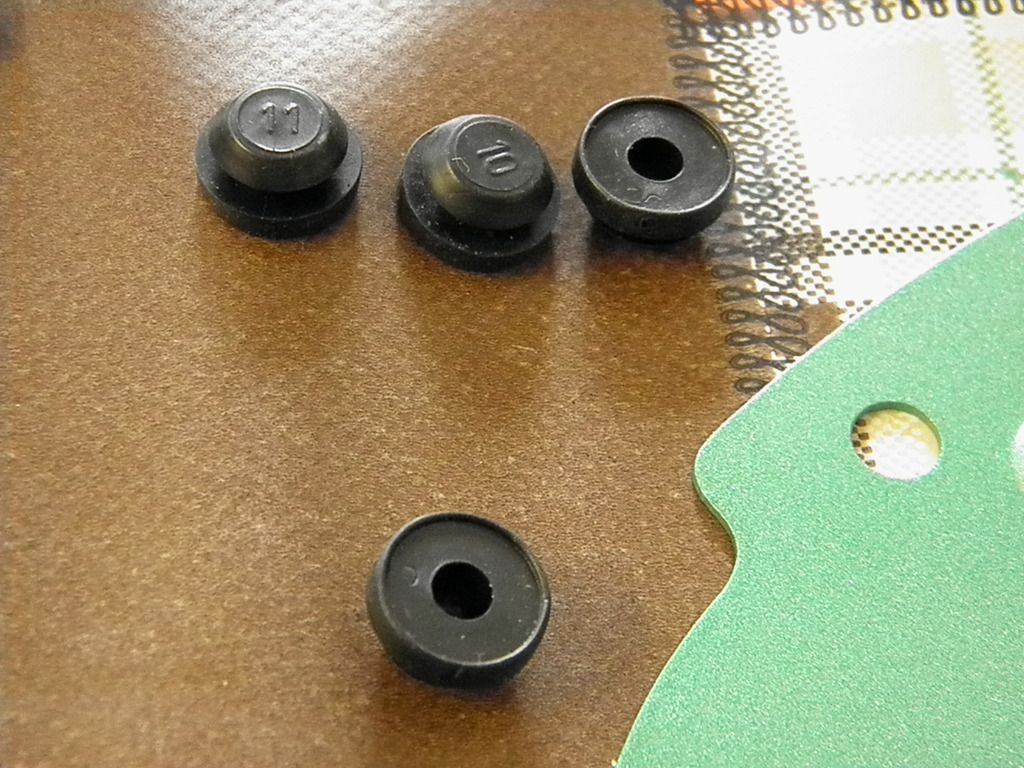
New rubber feet
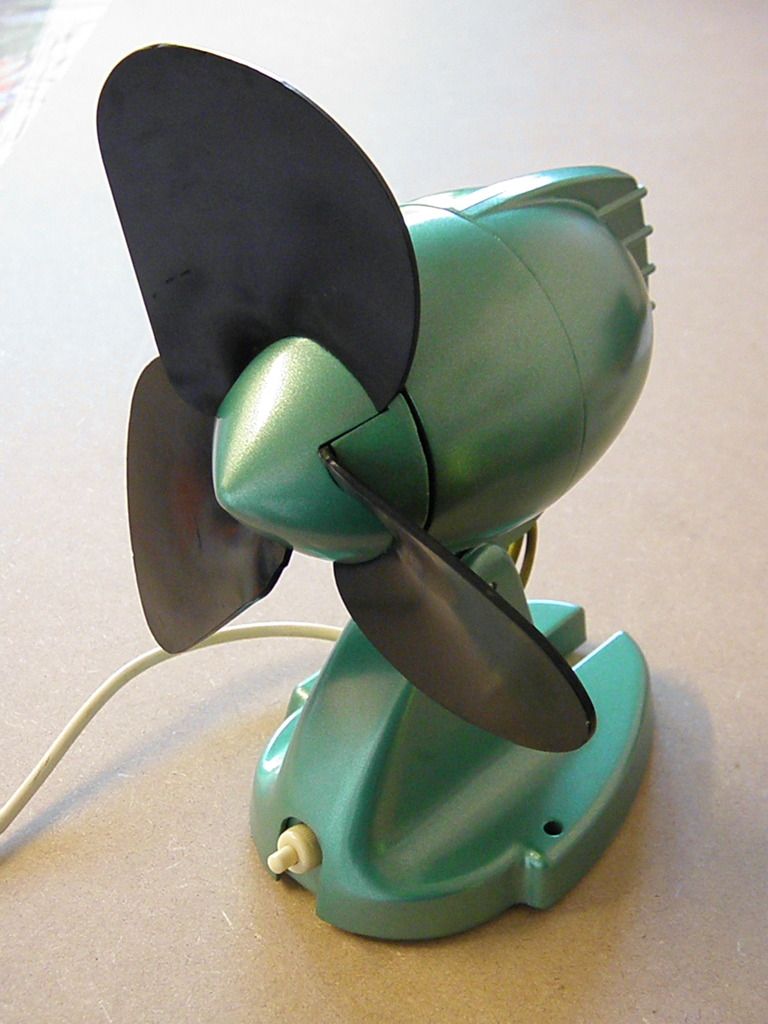
Complete GEC fan – front
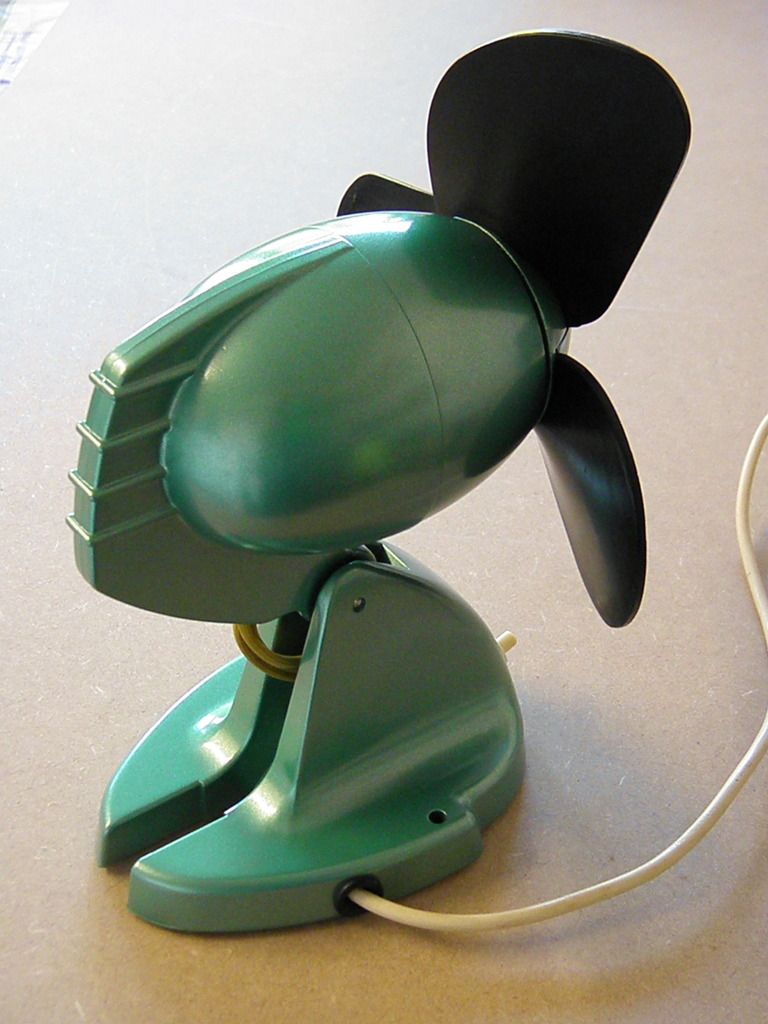
Complete GEC fan – rear
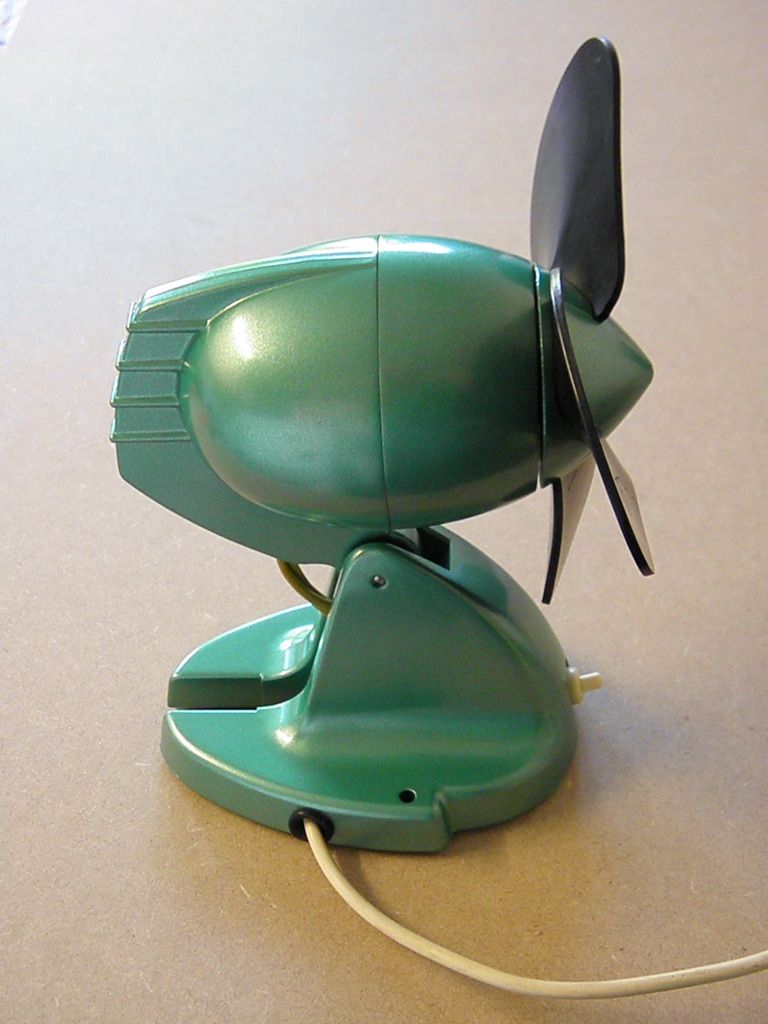
Complete GEC fan – side view

Not a car - but a mechanical object with classic aeronautical styling!
This little fan narrowly missed the bin when an old production manager took a dislike to it and decided to throw it away! Being someone who appreciates the qualities of old junk, the fan quickly found itself out of his hands and inside my bag.
It is a 1950s GEC rubber-blade bullet fan. They quite often appear on ebay and are sometimes mistakenly described as 1930s due to the BS number on the base-plate. According to an internet source - GEC introduced the 'Grey Mist' metallic Turquoise-grey paint in 1949, which these are, and helps confirm that they are not from the 30s.
Quite a few years after it's rescue, I finally got round to restoring the little fan. A previous owner had made modifications to keep the fan going. A latch which controlled the tilt of the fan was missing and was replaced by a 'u' shaped brass bar with bolts fixed through the body. There were also large holes drilled through the motor housing, presumable to aid cooling (the do appear to be quite effective heaters!). The fan looks like it was also re-wired, as this was all in good condition and different from others I have seen pictures of, although obviously still old.
The base-plate was easy enough to remove - having just two screws. The motor body was a bit of a puzzle. There turned out to be an imperial-size grub-screw on the fan assembly accessible through a small notch on the motor casing - the fan being rotated around until the allen-key located in the screw. Once the fan was removed from the body, two nuts held the casing together, and a small screw at the back of the fan held the rubber blades in their casing - a very clever design.
Once apart all the painted parts were stripped, holes were given a bevelled edge and filled with metal-based filler (I'd have loved to have soldered the holes, but thought it too risky). I manufactured a new latch from brass using a pillar drill as I have no lathe, and a spring from a pen! The body was then primed, sanded, primed and sanded again, then a top-coat of Ford Jade Green paint (I wanted it to be more colourful than the original grey - and thought the green suited the fan well).
The mechanical parts were then cleaned and oiled, and the whole thing reassembled very carefully on a cloth so as not to damage the new paint!
Although the fan does work - I do not intend to use it as such - it is very old and has done it's share of work. Some people do tend to worry about the lack of guard around the blades - well; they are made of rubber, and there is very little torque from the motor. I would not say that it is pleasant to get your fingers caught in the blades - but it does not really hurt - I think the biggest danger would be having your arm knocked whilst holding hot tea!

Strip-down – Rear motor body

Strip-down – Front motor body

Strip-down – Fan Removed

Strip-down – Fan disassembled. Note the single screw for holding the assembly together.

Strip-down – Inside the base. Note the holes on the motor casing behind the base – these should not be there!

Strip-down – The baseplate

Freshly painted parts

New handmade latch

New rubber feet

Complete GEC fan – front

Complete GEC fan – rear

Complete GEC fan – side view






